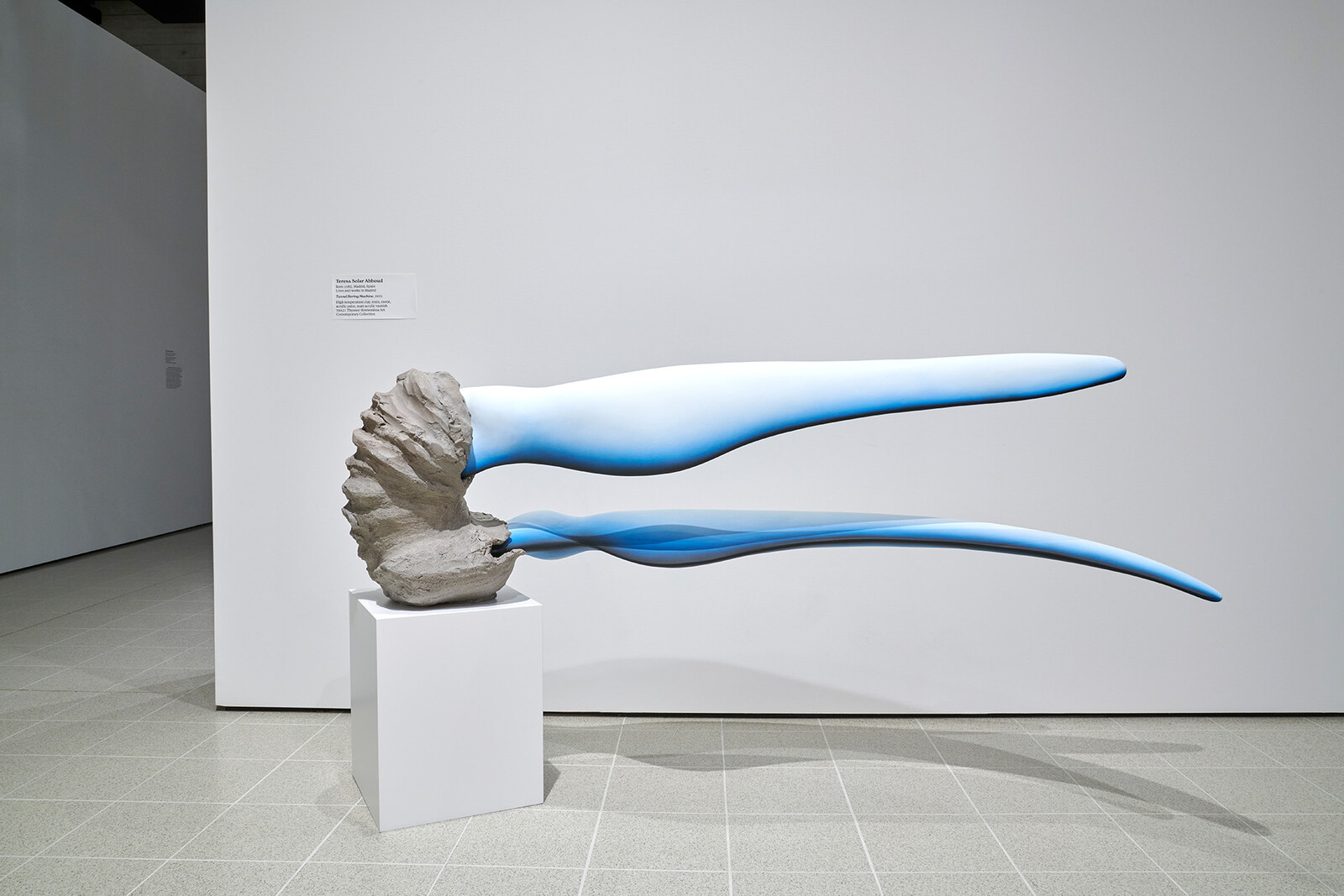Spanish artists from the TBA21 Collection
May 9–July 20, 2025
Clear, Lucid, and Awake invokes the possibility of looking at culture like we look at a mind—a mind captivated by how specific communities combine ideas and interpret spaces to generate new meaning. Can a hard-won path to democracy and economic development shape a generation’s understanding of nature? Can this longing for reciprocal communication with the natural world give rise to new political concepts to imagine the future of coexistence?
Bringing together artists from a common generation and cultural background, and placing their work in conversation with another cultural context, expresses a genuine desire to connect—to spend time in mutual exploration, and to discover whether others have encountered the world with comparable experiences, questions, and uncertainties. Life is not made of static points, but of paths and movement—and exhibitions embody exactly that dynamic energy between ideas and artists.
The works presented in this exhibition are mostly part of the TBA21 Collection—a foundation committed to commissioning and acquiring artworks that imagine the agency of nature and the possibility of peace. “Peace and nature are almost the same word, since coexistence is the state of living together without endangering others. All artists present belong to the same generation, a generation oriented toward regeneration. Regeneration as the effort to return life to life, care for communities and their specific knowledge of the environments they inhabit,” says Chus Martínez, curator of the exhibition.
Reimagining coexistence through art
Through diverse artistic languages, the exhibition embodies a deep connection with nature and explores the many dimensions of the natural world as seen by a community of Spanish artists from a shared generation. Presenting these works in Korea becomes a way of creating a shared reality—one that might not have existed otherwise.
The exhibition brings together a group of ten Spanish artists whose practices delve into memory, ecology, and speculative thinking through diverse material and conceptual approaches. Cristina Lucas offers embroidered cartographies that act as counter-narratives to official histories, linking the Spanish and Korean wars. Regina de Miguel’s video work Nekya explores the extractive histories and mythologies of the Riotinto region, projecting these into cosmic futures. Asunción Molinos Gordo reclaims ancestral knowledge through ceramics and film, presenting traditional weather forecasting as a tool for climate resilience. Diego Delas’s paintings, infused with ritual materials, propose a symbolic archaeology of rural life. Belén Rodríguez’s textile installation evokes slowness, care, and ecological continuity through recycled and naturally dyed fabrics. Teresa Solar Abboud merges the organic and mechanical in hybrid sculptural forms that reflect on transformation and memory. Meanwhile, Claudia Pagès, Daniel Steegmann Mangrané, and Álvaro Urbano present spatial and performative works that inhabit memory as a living process. Finally, Irene de Andrés reanimates the Manzanares River (Madrid) as a site of ecological recovery and poetic resistance.
Public activities and visiting program
In addition to the exhibition, the public program includes roundtable discussions, screenings, and performances with artists including Belén Rodríguez, Asunción Molinos Gordo, Diego Delas, Daniel Steegmann Mangrane, Regina de Miguel, and Claudia Pagès, among others.
Exchange
The exhibition also marks and celebrates the 75th anniversary of diplomatic relations between Spain and the Republic of Korea. Clear, Lucid, and Awake, curated by Chus Martínez and co-produced by TBA21 Thyssen-Bornemisza Art Contemporary and Art Sonje Center, in collaboration with the Spanish Ministry of Culture, Acción Cultural Española (AC/E), AECID, and the Embassy of Spain in Seoul, fosters a conversation between two nations that are geographically distant yet culturally resonant—both peninsulas with deep maritime histories, industrialized transitions, and complex relationships with their rural landscapes. The anniversary is celebrated in both directions with the presence of Korean artists in Spain in different projects over the next few months.
TBA21’s curatorial vision and long-term relationships with Spanish artists reflect a commitment to art as a catalyst for change across continents, media, and audiences. Chus Martínez, curator of the exhibition, delves into the relevance of the exhibition: “In a moment when geopolitics has become a game of antagonisms, it is important to learn how to relate contexts that are rarely considered “comparable.” Why? To be able to see the world as a whole. We never imagined we would face an anti-globalization backlash for the reasons that now dominate the headlines. That is why the best way to “celebrate” bilateral relations is through an exhibition—a space where the experiences of very different places and cultures are presented as similar, possible, future-oriented, and close. An exhibition is, in other words, a negotiating front.”

